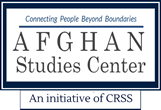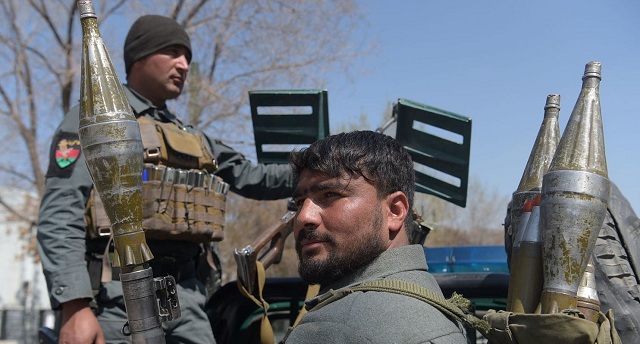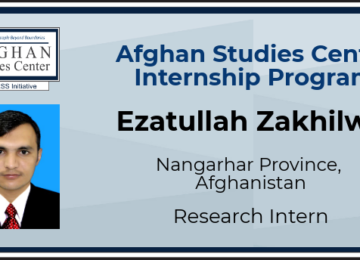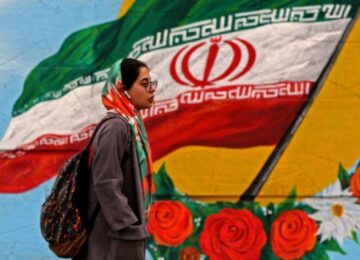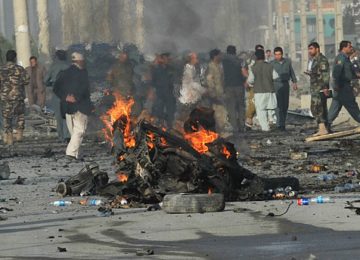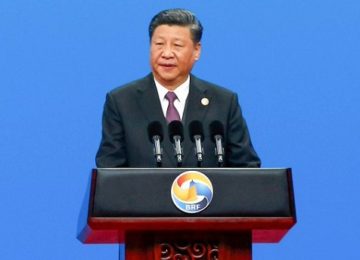The U.S. military said Monday that it has killed the senior leader of an Islamic State enclave in northern Afghanistan, highlighting an evolving fight that expanded more than a year ago after the militant left the Taliban in a dispute.
Qari Hikmatullah and his bodyguard were killed while walking in the Bal Chiragh district of Faryab province on Thursday, said Army Col. Lisa Garcia, a U.S. military spokeswoman. News of the strike began circulating in Afghan media and among local officials on Saturday, with some Afghan officials pinpointing its location a short distance over a provincial border in the Darzab district of Jowzjan province, about 275 miles northwest of Kabul.
Qari Hekmat, as Afghan officials commonly call him, was born in Uzbekistan, called Jowzjan home and spent years as a Taliban commander there.
The death draws attention to a remote area of Afghanistan where the Taliban and Islamic State fighters have battled each other. The Taliban attempted to mount an offensive last year to take back Hikmatullah’s district of Darzab and nearby areas. Hikmatullah’s group withstood the attacks, and Hikmatullah himself survived at least two assassination attempts by the Taliban, said one Afghan security official, speaking on condition of anonymity due to the sensitivity of the issue.
The U.S. military said in its statement Monday that Hikmatullah “had a history of divided loyalties,” initially serving as a leader in the Islamic Movement of Uzbekistan (IMU) before joining the Taliban and ultimately starting an Islamic State enclave. He is expected to be replaced by Mawlavi Habibul Rahman, another native Uzbek who has past ties with the Taliban, the U.S. statement said.
Some Afghan officials have said that the airstrike was carried out by the Afghan air force, but the U.S. military statement specifically said it was a U.S. strike. The top coalition commander in Afghanistan, Army Gen. John W. Nicholson Jr., nonetheless credited both the U.S. military and the Afghan Special Security Forces.
“ASSF and U.S. counterterrorism forces killed Hikmatullah, and they will kill any successors. IS-K will be eliminated,” he said, using an abbreviation for the terrorist group that stands for Islamic State-Khorasan.
Garcia said the Islamic State is believed to have about 2,000 fighters across Afghanistan, with concentrations in southern Nangahar province, Konar province and Jowzjan. Counting them can be difficult, with militants like Hikmatullah sometimes rebranding themselves.
Nicholson has said that IS-K is in three locations: southern Nangahar, Konar and Jowzjan. Afghan and U.S. forces are attacking all three of these locations. IS-K has tried to expand its presence but has been unable to do so, Nicholson said, adding that wherever its fighters are and whenever they emerge to threaten the Afghan people, IS-K will be eliminated. He said U.S. forces in Afghanistan will support Afghan government forces in achieving this goal and that there will be no haven for any terrorist group.
Hikmatullah led a group that is believed to have included hundreds of local militants, as well as several dozen foreign fighters originally from Uzbekistan. His activities focused mostly on isolated, poor villages, dominated by ethnic Uzbeks. He banned television and occasionally staged brutal public punishments after he took over, Afghan officials said.
The head of the Jowzjan provincial council, Abdul Hai Hayat, said Hikmatullah was killed in the Khawaja Arab village of Bal Chiragh district, which sits on the border with Jowzjan. Hayat said that Hikmatullah was ruthless and that his group beheaded a well-known cleric. In another case, his men killed someone, filled a bag with dismembered remains and displayed it publicly as a macabre warning.
Not all Islamic State fighters in northern Afghanistan are happy with the selected successor, and there has been fighting among Islamic State members for several days, Hayat said. Now is the best time for the Afghan government to attack them, he added.
Brig. Gen. Mohammad Radmanesh, a spokesman for the Afghan Ministry of Defense, said Monday that Hikmatullah was on the target list of both U.S. and Afghan forces and was killed in a mountainous region. His successor “does not have the efficiency and experience that he did,” the Afghan spokesman said.
Bill Roggio, who analyzes terrorist groups for the Long War Journal, said Hikmatullah’s fighters had begun to expand south from Jowzjan to Faryab province, taking shelter in Uzbek enclaves. Security in Faryab has worsened over the past several years. The Islamic State has played a role in that, but the Taliban also is very active in the province, Roggio said.
The U.S. military said Monday that it has combined with Afghan special operations forces on several other operations in the region, which depleted the options for who might replace Hikmatullah. They included a nighttime raid that began March 26 before midnight and killed an Islamic State platoon commander, and a March 16 airstrike that killed two other Islamic State platoon commanders as they met in neighboring Sar-e Pol province.
This article originally appeared in The Washington Post on April 09, 2018. Original link.
Disclaimer: Views expressed on this blog are not necessarily endorsed or supported by the Center for Research and Security Studies, Islamabad.
